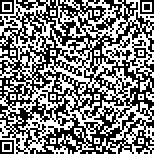| 摘要: |
| 为了解防屈曲支撑作为抗侧力构件的性能,设计一种可拆解组合的全钢双核芯防屈曲支撑,并通过拟静力试验,研究了其承载能力和耗能特性.首先通过一个单核芯试件的试验发现了设计和锚固的不足,改进后成功获得了单、双核芯试件的荷载位移曲线和低周疲劳曲线,并通过研究曲线特征和规律,取得了强度、变形、耗能等设计参数,最后用Bouc-Wen模型对防屈曲支撑进行了地震作用下的数值模拟.试验和分析结果表明:防屈曲支撑克服了普通支撑受压屈曲的缺点,滞回曲线拉压基本对称,呈饱满的梭形,具有较高的阻尼比,且往复荷载下耐疲劳.Bouc-Wen模型可以较好地模拟其滞回性能.所设计的双核芯支撑性能稳定,组装灵活,适合工程应用. |
| 关键词: 拟静力试验 防屈曲支撑 滞回耗能 等效阻尼 Bouc-Wen模型 |
| DOI:10.11918/j.issn.0367-6234.2015.06.015 |
| 分类号:TU317.1 |
| 基金项目:中央级公益研究所基本科研业务专项经费(2013B17). |
|
| Design and experiments of double-core all-steel buckling restrained braces |
|
WANG Yumei, WANG Shuang
|
|
(Key Laboratory of Earthquake Engineering and Engineering Vibration, China Earthquake Administration (Institute of Engineering Mechanics, China Earthquake Administration),150080 Harbin,China)
|
| Abstract: |
| To understand the performance of buckling-restrained brace (BRB) as a lateral-force resisting component, an assembled all-steel double-core BRB was designed, and its bearing and energy dissipation capacities was studied through quasi-static experiments. Firstly, a single-core BRB specimen was tested to find any design and anchorage deficiencies, and after improvement, the load-displacement curves and low-cycle fatigue curves were successfully obtained for other single- or double-core specimens, and the design parameters of the BRBs, such as strength, deformation, and energy dissipation, etc., were obtained after studying the characteristics and laws of the curves. Furthermore, numerical simulations were conducted on BRBs using Bouc-Wen model under earthquake excitations. The test and analysis results show that BRBs overcome the deficiencies of the traditional braces which tend to buckle under compression. The hysteretic curves are basically symmetric for compression and tension, in full spindle shape, with high damping ratios, and endure fatigue well under reciprocal loads. The hysteretic properties can be simulated well by Bouc-Wen model. The proposed double core steel BRBs have stable performance and are east to assemble, and are suitable for practical engineering application. |
| Key words: quasi-static experiments buckling-restrained braces hysteretic energy dissipation equivalent damping Bouc-Wen model |







